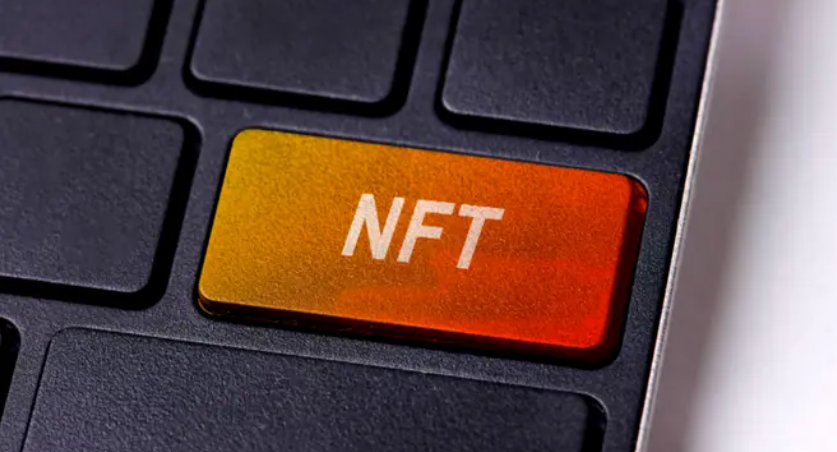Currently, NFT tokens have been in the spotlight for quite some time. The NFT has an average market capitalization of approximately $6,677,230, which will fluctuate based on market fluctuations. These exceptional NFT Marketplace developments have also benefited not only their owners and developers, but also the markets they are hosted on. The NFT is now a major source of funds and income.
The NFT market today
A non-fungible token marketplace is a Blockchain-based online marketplace for buying and selling non-fungible tokens (NFTs). The most expensive NFT as of early 2022 is Pak’s “Merge,” which sold for $91.8 million. As NFT costs rise, NFT market development becomes more popular.
NonFungible.com reports that overall capitalization of major NFT projects increased by more than 2,100% in the first quarter of 2021 (compared to market growth of 30% a year earlier). The most popular NFT tokens sold for around $70 million, with many selling out immediately. Many well-known people contribute to the market by changing their music, images, memes, movies, logos, codes, etc.
Here are some NFT stats you should be aware of,
- In terms of total volume traded, NBA Top Shot is the largest NFT marketplace, with around $600 million moved by mid-2021. If recent sales alone are taken into account, OpenSea will be the undisputed leader by mid-2021, managing transactions of 70 to 90 million dollars every 30 days.
- The most expensive NFT ever sold was Beeple’s “Everydays: the First 5000 Days,” which sold for $69.3 million.
- In 2020, more than four times as much money was traded in NFTs, or just over $250 million, than in 2019. In 2020, the market capitalization, which reflects the total value of all assets, will also reach $338. millions of dollars.
- According to nonfungible.com’s quarterly report, total sales in the first quarter of 2021 were $2 billion.
What is NFT minting?
Minting is the method used to create an NFT. Minting an NFT is the act of releasing your token onto the network. You must pay a fee to the miners in charge of publishing your NFT because minting an NFT requires Blockchain transactions. It is almost certain that the most expensive element of the operation will be to carry out an NFT.
Cost to Mint NFT
Certain costs must be incurred for NFT minting. Gas is almost always the first thing the user has to pay for. On the Ethereum network, these usually cost around $70. Site fees, such as those associated with selling NFTs, may also apply. Depending on the website, these can range from free to $900.
When minting an NFT, there are some costs to consider. Consider the following suggestions:
- Gas Fees – These fees apply to all bitcoin transactions. It is a form of compensation for the people who bring computing power to the security of the network. This is determined by the number of transactions that are currently being processed.
- Fees to establish a new account: Whether or not this is true is often determined by location.
- Sales Commissions: In rare circumstances, you may be able to generate tokens for free. If you want to sell them, there will be a cost.
Does NFT Minting Depend on The Chosen Blockchain?
Make sure the platform you select can handle NFT sales and transfers between various Blockchains. The volume should be higher than on a lesser known Blockchain because not everyone uses the same Blockchain.
The Blockchain you have chosen to mint the NFT on should be your top priority. There are several Blockchains available, the best known of which is Ethereum. Polkadot, Tron, WAX, Cosmos, EOS, and more are among the others.
Although Ethereum continues to be the leader in volume, the fees associated with using the Ethereum Blockchain have led some users to seek alternatives that are catching up. Most of these different Blockchain ecosystems will expand in size as usage increases.
How much does it cost to launch an NFT project?
Here is everything you need to know about the “hidden fees” associated with an NFT project.
#1Gas Fee
At this price point, the GWEI is recognized as a standard. The most GWEI (or 0.000021 Ethereum) that can be purchased is 21,000 GWEI. GWEI is equivalent to 0.000000001 Ethereum
The first is a gas fee, a user fee designed to offset the cost of the CPU time required to process and validate Ethereum Blockchain transactions. These fees are paid when smart contracts are created on the Blockchain. The fees for using the NFT market and bitcoin networks increase proportionally to the processing speed.
#2 NFT Transaction Fee
The marketplace platform determines any additional costs. For NFT access, OpenSea, for example, charges an initial registration fee of US$70-300, followed by a monthly subscription fee of US$10-30.
The price of a product goes up 2.5% when it is sold. Initial fees charged by the Foundation range from $120 to $400. A service fee of 15% of the initial sale price is also charged.
NFT Market Development Cost: Ethereum vs. Polygon vs. Solarium
If you want to make your own NFT, you first need to understand all the costs involved. There are numerous Blockchains to choose from, each with their own set of costs. So how much does an NFT Marketplace development cost? The Blockchain you choose to mint your NFT on will have an impact on manufacturing costs in the long run.
An NFT can be as cheap as $0.05 or as expensive as $150. The Solana Blockchain is the cheapest, with an average NFT creation cost of less than $0.01, while the Ethereum Blockchain is the most expensive, with an average cost of $70. Market commissions of 2.5% to 5% are not included.
In most well-known NFT markets, lazy minting is enabled for the Polygon and Ethereum networks, allowing you to produce your NFT completely free of charge. There will be no upfront fees when using the deferred minting option to generate an NFT on Polygon or Ethereum Blockchains on platforms like OpenSea or Rarible.
It is no longer necessary to spend more than $100 to list an NFT for sale. On Ethereum, there is the traditional (and more expensive) way to mint an NFT. Although Solana does not support lazy minting, generating an NFT only costs a few cents of in-network spending. Because developing an NFT is so affordable, more NFT collections are likely to be released this year.
Guidelines to Reduce The Cost of Creating an NFT Marketplace
It is beneficial to take the necessary steps to reduce the overall cost of building an NFT. Here are some tried and true ways to reduce the cost of NFTs,
- First thing in the morning, mint your NFT. Late at night, when the Blockchain is less busy, reduced transaction prices are often available. Blockchain minting is less expensive for you since there is less demand.
- Use a market that offers deferred mintage or no gas. Lazy minting eliminates the need to pay for your idea upfront. You can get a free NFT by using minting without gas.
- Use a low-cost blockchain. Polygon, Solana, and Cardano are examples of blockchains that provide low-cost minting. Keep in mind, however, that these Blockchains are not as well known as Ethereum.
- Accept responsibility for your actions. You can save a lot of money if you create your artwork, smart contracts and minting website for an entire NFT company.
- Use scaling methods. Layer 2 solutions reduce energy consumption, lowering gas prices and maintaining the integrity of the Ethereum Blockchain. That means it’s good for the environment, as well as your money.
Finally, the Blockchain used determines the cost of building an NFT.
The Essential Functions For The Development Of The NFT Market
- Storefront
Where people can buy or sell NFTs.
- Product List
User preferences, including collection, price, creator, and other factors, can be used to filter this.
- Product Page
The NFT is described, the creator is mentioned, and the history of offers and purchases is provided.
- User Authorization
Using a digital wallet, social networking site, or email address and password.
- User Profile
Proprietary NFTs, transaction history, and personal information are disclosed.
- Seller Profile
You can review your NFT transaction history and earned royalties on the page where merchants submit their digital goods and start the NFT creation process.
- Flexible Prices
Allow NFT artists to set a preset price or hold a scheduled auction for their works.
- Fixed Market Fee
It is charged when an NFT is purchased, allowing the market to be monetized.
- Royalties
An NFT creator is billed each time the NFT is sold again.
- Payment
Allow payment by credit card, mobile wallet or digital wallet.
- User Profile Management
It has the ability to evaluate and monitor the behavior of market clients.
- Content Management
A simple page editor for uploading, editing and posting how-to and marketing content.
- Sales Management
Allowing instant access to market sales and earnings figures.
The Best Way to Start an NFT Marketplace?
Here is a summary of the methodologies required to create the NFT market,
- Creating a Niche Market for NFTs Among the most popular are artwork, video game content (such as characters in online games), music, and sports memorabilia.
- Select the most suitable Blockchain architecture and start the Blockchain network.
- While Ethereum is the most popular cryptocurrency on NFT markets, the transaction costs for small businesses can be prohibitive. Therefore, you should not rule out other options.
- Create smart contracts that will be used to mint NFTs and initiate purchase transactions automatically if all sale parameters are met
- Establish a web-based marketplace where people can transact business according to their roles: Buyers buy matching tokens when vendors ship their digital goods.
- Build cryptocurrency payment gateways to allow market participants to buy, trade and transfer NFTs.
How Does The NFT Market Work?
Its tokens, unlike Bitcoin and Ethereum, currently cannot be sold on cryptocurrency exchanges. To buy and sell NFTs, the owner needs a specialized platform that allows them to create, store, and trade non-fungible tokens. Right now the most popular marketplaces are OpenSea, Rarible, Superfarm, and Mintable.
They generate NFTs by using specialized smart contracts and storing the token in metadata, which is a type of data. Then, the critical parameters are included (name, non-fungible characteristic, indivisible characteristic, address, number, etc.). Non-fungible tokens can be bought and sold at auction or at a predetermined price on the platform.
Conclution
NFT markets are becoming more and more popular and this trend is expected to continue. It’s critical to note that the NFT economy is still in its early stages, making predictions about where things will go in the next few years unrealistic.
As a result, if you’re new to the game, you should start by figuring out what works and what doesn’t, and then save money while you research and invent your core products.
Pyramidion Solutions is a leading NFT Marketplace development company. We help you establish your own NFT marketplace and attract the growing population of NFT users. Our feature-rich decentralized NFT marketplaces allow you to tokenize assets like real estate, artwork, game cards, and software licenses. To find out more and take advantage of our NFT Marketplace development services, connect with our Blockchain experts today!














